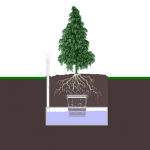basilfarmer
Member
smokeymacpot- I'm actually afraid water crystals may be too much............. water crystals are used for holding moisture for use later, with the Earth hole you shouldn't need that, the only place I'd consider using them in a Earth hole would be in the wick its self, they really have no place or need anywhere else in the hole.
great thread backcountry. everytime I come by here you have something going on. I saw a grow at overgrow where a guy used new chem free mop head strings as wicks into very wet ground. Anyway, this idea of yours looks about as camo & failsafe as it could get.
not to sidetrack, but I have heard a few times that polymer crystals make the buds taste plasticy????? anyone can confirm or dismiss this? thanks.





